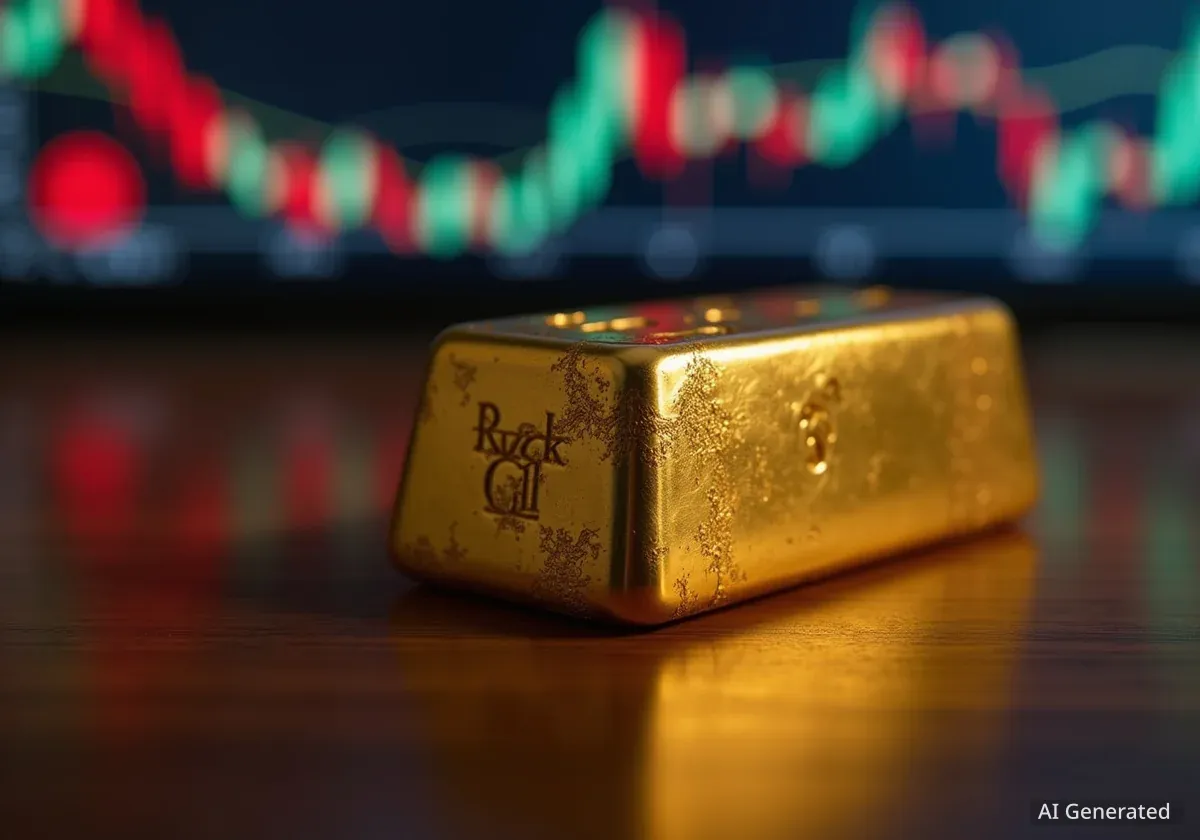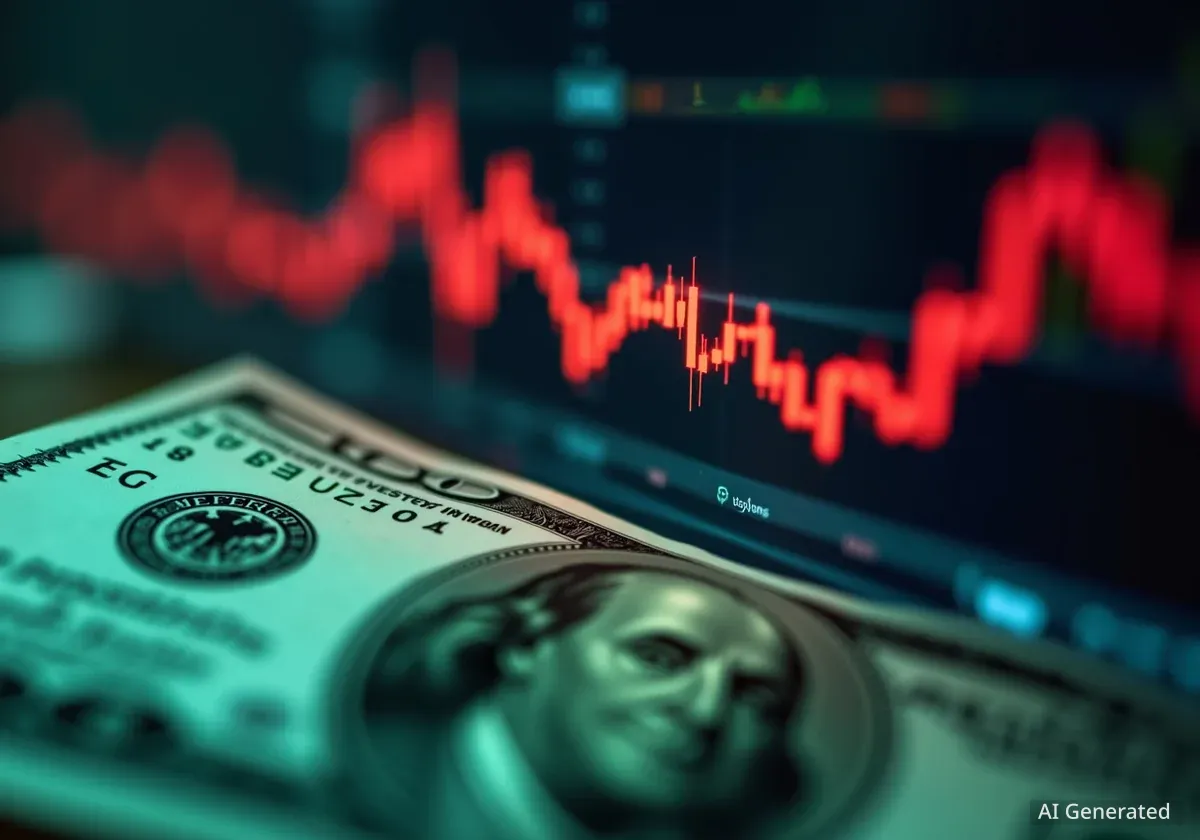The price of gold (XAU/USD) is trading near $3,750, supported by expectations of future interest rate cuts from the U.S. Federal Reserve. Heightened geopolitical tensions are also contributing to the precious metal's strength as investors seek safe-haven assets.
However, recent comments from Federal Reserve Chair Jerome Powell suggest a cautious approach to monetary policy, which could limit further significant gains for gold. The market is currently balancing the prospect of lower borrowing costs against uncertainty over the timing of the Fed's next move.
Key Takeaways
- Gold is trading near the $3,750 level during Thursday's early Asian session.
- Expectations for additional U.S. interest rate cuts in 2025 are a primary driver for the price increase.
- Rising geopolitical risks, including recent NATO-Russia tensions, are boosting demand for gold as a safe-haven asset.
- Cautious remarks from Fed Chair Jerome Powell about the pace of future cuts may cap the metal's upward potential.
Federal Reserve Policy Fuels Gold's Advance
A significant factor supporting the current gold price is the U.S. Federal Reserve's recent monetary policy shift. At its September meeting, the central bank reduced its benchmark interest rate by 25 basis points (bps). This decision brought the Federal Funds Rate to a target range of 4.00% to 4.25%.
Lower interest rates generally benefit gold, which is a non-yielding asset. When rates fall, the opportunity cost of holding gold instead of interest-bearing assets like bonds decreases, making the precious metal a more attractive investment.
Why Interest Rates Matter for Gold
Gold does not pay interest or dividends. When interest rates are high, investors can earn a relatively safe return from government bonds. When rates are low, the return on those bonds is less appealing. This makes a non-yielding asset like gold comparatively more attractive, often leading to increased demand and a higher price.
Future Rate Cuts on the Horizon
The Federal Reserve also released its Summary of Economic Projections (SEP), commonly known as the 'dot-plot'. This document indicated that the median forecast among Fed officials is for two additional rate reductions before the end of 2025.
Furthermore, the projections suggest one more rate cut is anticipated in 2026. This outlook for a continued easing of monetary policy provides a strong tailwind for gold, as investors price in a lower interest rate environment for the foreseeable future.
Geopolitical Tensions Increase Safe-Haven Demand
Alongside monetary policy, global political instability is playing a key role in gold's recent performance. Gold is widely regarded as a safe-haven asset, meaning investors often buy it during times of economic or political uncertainty to protect their wealth.
Recent events have underscored this role. Tensions escalated this week after NATO issued a stern warning to Russia. The alliance condemned Moscow for violating Estonian airspace, describing it as part of "a pattern of increasingly irresponsible behaviour.”
NATO stated it would use "all necessary military and non-military tools" to defend itself, a statement that has heightened concerns about regional stability and prompted a flight to safety among some investors.
Such geopolitical flashpoints often lead to market volatility. In these scenarios, gold's historical reputation as a stable store of value makes it a preferred asset over more volatile investments like stocks.
Powell's Cautionary Tone May Limit Gains
While the broader trend appears positive for gold, comments from Fed Chair Jerome Powell have introduced a degree of caution into the market. Powell's recent remarks suggest that the path for future rate cuts is not guaranteed and will be highly data-dependent.
"The US central bank would continue to balance concerns over labour market weakness with worries about inflation," Powell stated, indicating that the Fed is navigating a complex economic landscape.
This careful balancing act means that if inflation remains persistent or the labor market shows unexpected strength, the Fed might delay or reduce the number of planned rate cuts. This uncertainty could act as a ceiling for the gold price, preventing it from rising too quickly.
Understanding Gold's Role in the Global Economy
For centuries, gold has been a fundamental part of the global financial system. Its primary appeal lies in its status as a reliable store of value and a hedge against economic turmoil.
Central Banks are Major Buyers
Central banks around the world are among the largest holders of gold. They maintain significant reserves to support their currencies and demonstrate economic stability. Emerging economies, in particular, have been active buyers in recent years.
- Diversification: Central banks use gold to diversify their reserves away from a heavy reliance on the U.S. dollar.
- Stability: Holding physical gold can increase confidence in a nation's financial solvency.
- Record Purchases: According to the World Gold Council, central banks purchased a record 1,136 tonnes of gold in 2022, valued at approximately $70 billion. Nations like China, India, and Turkey have been notable buyers.
Gold's Relationship with Other Assets
The price of gold often moves in the opposite direction of certain other major assets. Understanding these inverse correlations is key to analyzing its market behavior.
The U.S. Dollar: Gold is priced in U.S. dollars (XAU/USD), so its relationship with the currency is critical. A weaker dollar makes gold cheaper for buyers holding other currencies, which can increase demand and push the price up. Conversely, a strong dollar tends to weigh on the gold price.
Risk Assets: Gold is also inversely correlated with risk assets like stocks. During periods of economic growth and market optimism, investors may sell gold to buy stocks. During stock market downturns or recessions, investors often sell stocks and buy gold for its perceived safety.





